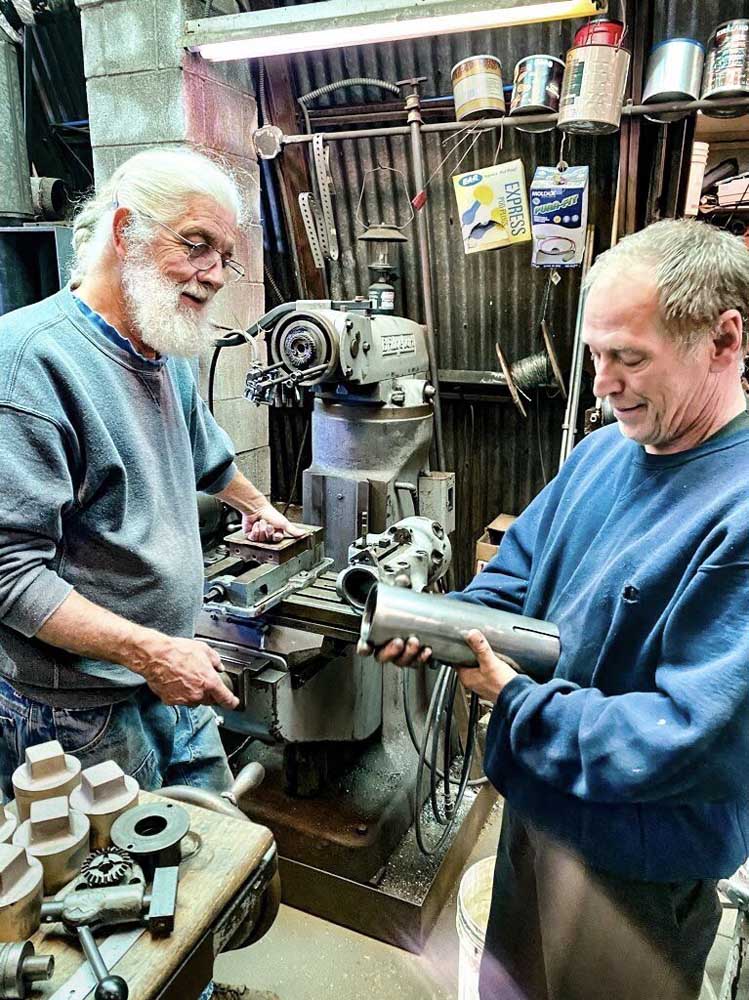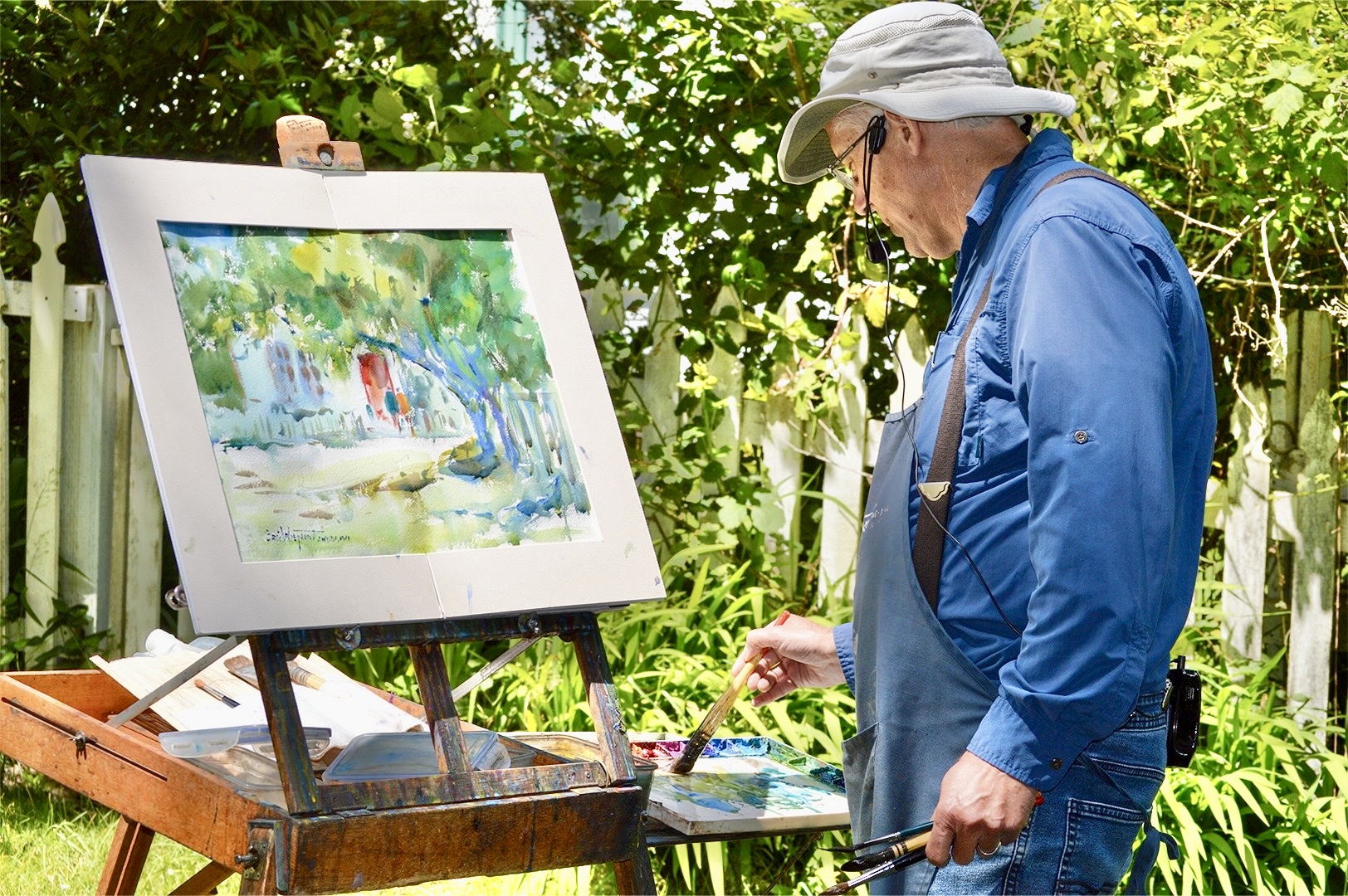Locomotive restoration chugging along in Astoria
Published 12:28 pm Thursday, October 20, 2022

- Mark Clemmens, left, and Robert Thompson, longtime volunteer machinists, examine a bearing shaft.
Thousands of motorists stream by an unheralded, Quonset hut-style building off Industry Street each day, never knowing the treasure it contains. Inside, a small group of railroad aficionados labor on a nearly century-old steam locomotive, seeking to return rail travel to the old Astoria and Columbia River Railroad line.
Trending
Since its formation in 1990, the nonprofit Astoria Railroad Preservation Association has looked for a locomotive for their project. In 1991, the group found No. 21 for sale at the Northwest Railway Museum in Snoqualmie.
The purchase price was fair and a deal was struck. The Astoria Railroad Preservation Association was now a real railroad with a real train. No. 21, a Mikado-type locomotive with a wheel arrangement that suited the need for a lightweight engine, was built by Baldwin Locomotive Works in Philadelphia, Pennsylvania, in 1925.
This type was first designed for the Japanese railway system in the 1890s, but ultimately became the dominant locomotive type of the late years of steam power in the U.S.
Trending
No. 21 burns bunker C oil, the same fuel burned by many ships that ply the nearby Columbia River. This fuel resembles black licorice in consistency and needs to be heated in the tender to flow to the firebox. A 2-by-8-by-2 locomotive, No. 21 has two leading wheels, eight driving wheels and two trailing wheels.
Beginning in 1925, the black locomotive with the green lettering and the white painted stripe on the wheels was operated by the Santa Maria Valley Railroad in California, hauling oil and produce to connect with other lines on the coast.
Lumber and other building materials rode in the other direction. In 1962, No. 21’s old engine was retired, later sold to a restoration group. This local crew marks the third group of hopefuls looking to return the 82-ton relic to the rails.
Since its founding in 1990, the Astoria Railroad Preservation Association has been led by John Niemann, its president and chief mechanical officer. With an extensive industry background in the metal trades as a machinist, welder, teacher and team leader, Niemann spent years designing and maintaining equipment for the fish processing industry in Oregon and Hawaii before retiring in 2008 to take on the work on No. 21 full-time.
The association, governed by a seven-member board, has survived and made progress despite a shortage of funds that has plagued other restoration projects. The group has engaged in a variety of fundraisers over the years to help support the project, and other funds have flowed in, including a grant from the Oregon Community Foundation in 2005.
That grant paid for rebuilding the tender, which now sits on tracks across from Industry Street. This work was completed at a Clatsop Community College facility. “The local machine shops have come through when we need something done that’s beyond our capability and we appreciate the help,” Niemann said.
Some of the work, like the upcoming installation of the boiler tubes, the largest expense in the restoration, must be hired out to certified experts since the Federal Railroad Administration has strict rules and extensive inspections for any boiler used in public service.
In a 2018 interview with The Astorian, Niemann stated that “if we had the money, we could get this done in a year and a half.” The locomotive could be made operational for about $200,000 he said.
Four years later, that sum has grown, but the coffers of the association showed less than 1/10th of the funds, with the big-ticket items still in the offing. The boiler work alone is estimated to cost $120,000 in materials and specialized labor.
This summer, a Gearhart couple interested in historic preservation learned about the challenges that the group faces and decided to fund the restoration to completion. The couple prefers to remain anonymous and no exact figures on the agreement are being discussed.
A commitment like this is what all historic restoration projects seek but few receive. With a tightening economy, organizations need to move quickly to maximize funds. When asked about what the commitment made by the Gearhart couple means to the association, Niemann responded with one word: “everything.”
Workers are now finishing up installation of the firebox, machining and replacing bearings for the coupling rods that connect the locomotive’s eight 50-inch drive wheels. Next, workers will complete preparations for the boiler tube installation.
Even when the locomotive is ready to go on the tracks, the tracks and trestles that would carry the excursion train need their own restoration and need to go through inspections before tours could begin. The last traffic on the rails was the Lewis and Clark excursion trains in the summers of 2003 to 2005.
Grants and donations tend to fall off when inflation threatens. This means that the association needs more help in the way of donations, grants, and memberships to cover operation costs.
The association website has extensive documentation photos and other information on the locomotive project, but the best way to experience the relic is to visit the shop on Industry Street, open from 10 a.m. to 4 p.m. Saturdays and Sundays near the Port of Astoria, where visitors can put their hands on history.









